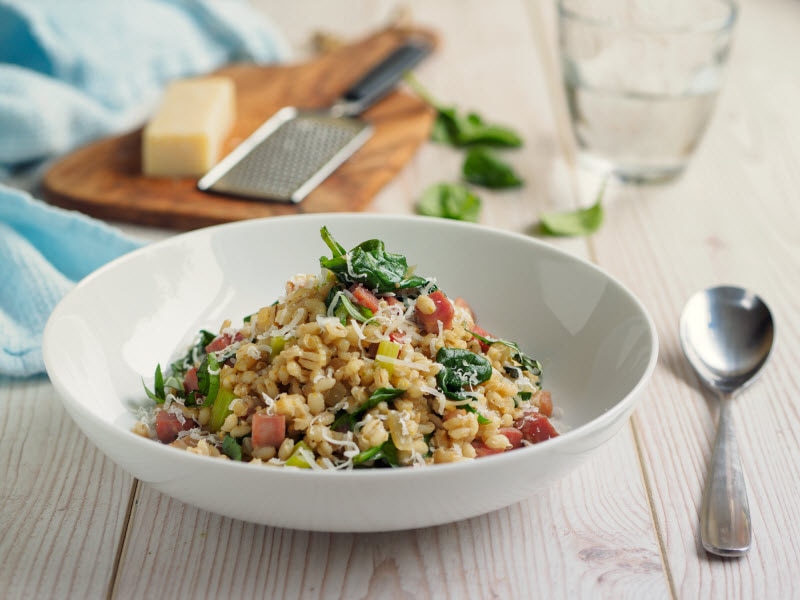Looking for an easy way to boost your health this winter? Try adding a little barley to your diet.
Barley nutrition facts
Research has shown that eating this cereal grain:
- Helps tame high blood pressure
- Improves insulin sensitivity
- Moves food through your system – thanks to the higher fiber content — which may help prevent colon cancer
“Some studies show that the type of fiber in barley has the potential to be especially effective at lowering blood cholesterol,” says Caroline West Passerrello, a Pittsburgh-based registered dietitian nutritionist and owner of Caroline West LLC, a consulting practice that develops nutrition education programming and training for organizations.
Barley is rich in B vitamins, such as thiamin, riboflavin, niacin, vitamin B6 (pyridoxine), folate and pantothenic acid. It is high in potassium and low in sodium.
And eating barley may help you feel full longer, making it a great food for people trying to lose weight.
Choosing the right type of barley
When adding barley to your diet, reach for the right variety – one that is a whole grain, rather than a refined grain. Whole grain barley leaves the outer bran layer and the hull intact.
“Whole grains include more vitamins, minerals and fiber than their refined-grain counterparts,” says Passerrello, who is also a spokesperson for the Academy of Nutrition and Dietetics.
She suggests looking for a product with a label such as “whole barley” or “hulled barley.”
By contrast, lightly pearled barley is not a whole grain. Some or all of the outer bran layer and the hull are removed from this type of barley, which lowers nutritional content.
Most of the barley you find in a grocery store is pearled barley, according to Oldways Whole Grain Council. It typically has a lighter color — tan, or even white — than whole-grain barley.
Still, even eating pearled barley can be a wise choice. It is more healthful for you than many other types of refined grains.
“Lightly pearled barley falls somewhere between a refined grain and a whole grain, so you still reap some of the whole-grain benefits,” Passerrello says.
But whole-grain barley remains a better choice. In fact, at least half the grains you eat every day should be whole grains, according to the U.S. Department of Agriculture.
The USDA notes that while most Americans consume enough grains overall, few people eat enough whole grains.
Potential drawbacks of consuming barley
While barley is beneficial for most folks, not everyone should eat barley.
“Someone with celiac disease or a gluten intolerance should avoid barley, since it is a gluten-containing grain,” Passerrello says.
In addition, barley contains a lot of fiber – anywhere between 17% and 30%, making it the highest-fiber grain of them all, according to Oldways Whole Grain Council.
People who switch to a high-fiber diet too quickly often complain of temporary symptoms, such as bloating, abdominal pain and flatulence.
Switching gradually to a higher-fiber diet can reduce these symptoms, as can drinking more water.
Adding barley to your diet
It is relatively easy to add more barley to your diet. Passerrello notes that you can find barley in ready-to-eat cereals. She also suggests adding barley flakes to homemade granola.
You can also use barley when cooking. “Barley is versatile, and can be used in both sweet and savory recipes,” Passerrello says.
She notes that ½ cup of cooked barley is considered one whole grain serving.
“You can use barley in place of rice in your recipes, and add barley to soups adds texture and taste,” Passerrello says.
When baking muffins and cookies, swap out traditional flour for barley flour at a one-to-one ratio for muffins and cookies. Passerrello notes that this ratio will not work with yeast breads, however.
True whole-grain barley can take a long time to cook – up to an hour. So, Oldways Whole Grain Council recommends cooking up a large batch and refrigerating or freezing the leftover barley for later.

